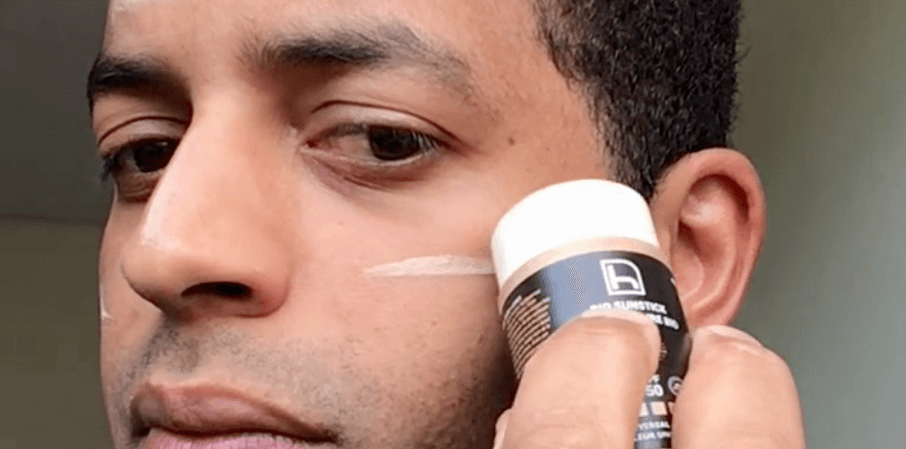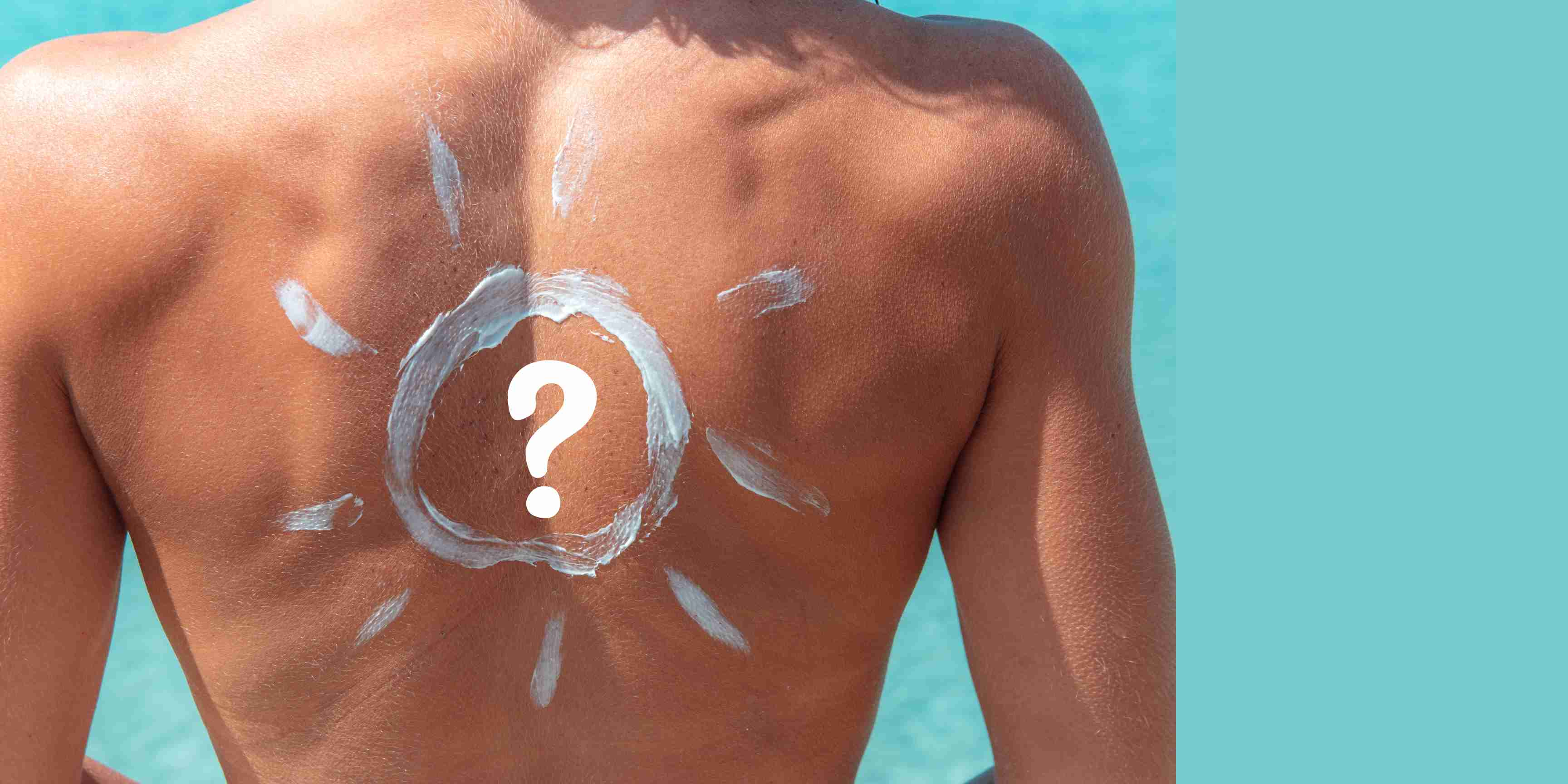
Sunscreen: am I using it correctly?
June 13 is the European Skin Cancer Prevention Day.
More than 80% of melanoma skin cancer cases are caused by sunburn, and this number is increasing year after year.
It is estimated that there are 1.5 million new cases of skin cancer worldwide each year and this number is expected to increase by 50% by 2040.
Because too much sun on your skin can be carcinogenic, prevention is better than cure. Therefore, you must protect your skin properly.
Nowadays, it is well known that the use of sunscreen is one of the aspects that you should consider for the health of your skin.
Despite repeated public health warnings about the risks of excessive sun exposure, there is still a lot of confusion about how and when to apply sunscreen.
Why do you need to protect your skin from the sun?
According to the MedlinePlus portal, an official organization of the United States government, when you expose your skin to the sun continuously, ultraviolet radiation damages the DNA, proteins and other molecules found within our skin cells.
In moderate amounts, exposure to ultraviolet radiation from sunlight helps our skin cells make vitamin D. But as we expose our skin to more sunlight, it tries to protect itself by producing melanin. However, if the exposure is too high, the skin cannot protect itself, and it burns.

These burns damage the DNA of our cells, causing premature aging and increasing the risk of developing skin cancer.
According to Richard Gallo, a professor of medicine at the University of California, a low SPF sunscreen slightly reduces exposure to solar radiation, but in most cases, this allows the harmful effects to continue to occur.
Nowadays there is a medical consensus that the best protection for your skin should be through a sunscreen with high protection (SPF 50) and a broad spectrum like the one offered by our Bio Sunstick .
What is SPF and how much do I need?
The acronym SPF stands for "sun protection factor," and the number on sunscreen bottles indicates how much ultraviolet radiation from the sun is required before it becomes ineffective.
Therefore, the higher the SPF, the more protected your skin will be. However, the SPF value only indicates the level of protection against UVB rays.
The solar radiation to which we are exposed varies throughout the day. The sun's rays are strongest between 12 and 4 pm.
That is why it is not recommended to sunbathe during this time period. And if you do, it is essential that you protect your skin well with an SPF 50 sunscreen.
What is the best sunscreen?
There are 2 types of sunscreens:
- Those that contain a physical or mineral filter.
- Those that contain a chemical filter.
As far as effectiveness is concerned at the protection factor level of both types, in principle, both types are effective, since the important thing is to take into account the SPF value.
However, chemical sunscreens generate a lot of controversy, since although they are effective in protecting us from the sun, there is a lot of debate about the possible side effects that chemical filters can cause in our body and also because of the pollution they cause in the environment. environment, especially on our beaches and seas.
We, as specialists in natural skin care, recommend using a sunscreen with a physical filter, as it is the most natural option.
The drawback of sunscreens with a physical filter is that they tend to leave a white film on your skin, unless they contain colored mineral pigments to camouflage that white film, as in the case of our Bio Sunstick, biodegradable sunscreen.
How can I tell if my sunscreen has physical or chemical filters?
Normally physical sunscreens (also called minerals) usually have some type of certification from an external body, which certifies it.
If your sunscreen is certified organic, in principle, it should not contain chemical filters, since the organizations that certify that the product is Organic do not allow chemical filters in sunscreen formulations.
For example, our Sunstick is Organic + Vegan certified by ACENE.
What is the best way to apply sunscreen?
It all depends on the type of sunscreen you use:
- If you use a chemical sunscreen, experts recommend applying it 20 minutes before sun exposure, thus giving your skin time to absorb it.
It is also recommended to reapply sunscreen regularly, since even if your sunscreen has high protection (SPF 50), do not expect it to protect you for 8 hours continuously.
- On the other hand, the advantage of using a sunscreen with a physical filter is that you can apply it just before exposing yourself to the sun.
Is sunscreen in Europe different from that in the United States?
There are some differences between sunscreens in the European Union and the United States, partly due to the way health authorities classify them.
In the United States, sunscreens are classified differently than in the European Union,
As a result, according to the BBC, some researchers have found that some US sunscreens do not meet the European Union's highest UVA protection standards.
Our Bio Sunstick is manufactured in Spain, complying with all the requirements of European legislation.
Can I get sunburned through glass?
Glass, such as a window, filters out the sun's most dangerous radiation (UVB rays), but still lets in radiation that causes little harm.
Repeated exposure to the sun, even through a window, can damage your skin.
Through glass there can also be exposure to UVA rays, which are believed to be responsible for 90% of the visible changes in the skin as we age, can still occur through glass.

Do sunscreens expire?
The answer again depends on the type of sunscreen:
- If your sunscreen contains chemical filters, it is true that these are losing effectiveness and that is why it is not recommended to use a sunscreen from the previous year.
Check your sunscreen for changes in consistency and color. Keep the bottle out of direct sunlight or in hot environments, such as the car, to prevent accelerated breakdown of the ingredients.
- On the other hand, if your sunscreen contains a physical (or mineral) filter, like our Sunstick, then it does not expire. And even less so if it is a solid stick, since as it does not contain water, there is no risk of it becoming contaminated.
Does sunscreen block vitamin D production?
The vitamin helps us absorb calcium to keep bones strong and our immune system in shape.
While it is true that there have been some concerns that sunscreen use may block the absorption of vitamin D, studies conclude that, overall, the risk of sunscreen affecting the amount of vitamin D we absorb is low , compared to the benefit of protecting your skin from the sun's rays and preventing skin cancer.
Does sunscreen contain toxic ingredients?
There is a great debate about whether the chemical filters used in sunscreens are safe for our body.
While it is true that the chemical sunscreens found on the market comply with current safety regulations, it is also true that there are plenty of examples of cosmetic ingredients that have been allowed for many years, and after the risks to our health have been proven. health (e.g. parabens), have ended up being banned .
So, as there are still many studies underway, natural cosmetics manufacturers like Homo Naturals follow the precautionary principle. You can find more information about the differences between natural and conventional cosmetics in this other article.
However, in physical sunscreens, like our Sunstick, this debate does not exist, since physical or mineral filters are considered safe in all cases , as well as more respectful of the environment , especially with regard to sea pollution.
How much sunscreen should adults use?
The FDA recommends applying 2 mg/cm2 (0.16 in2) of sunscreen to the skin. If we apply less than this, it will not offer the amount of protection listed on the label.
It is difficult to know exactly how much we are applying, especially if the sunscreen is in cream format.
However, if you use a sunscreen stick, you will be able to see much better if the amount you are applying is covering your face correctly.
What type of sunscreen should I use?
For us, the advantages of using a sunscreen with a physical/mineral filter , both for your skin, your body and the environment, tip the balance in favor of this type of product vs a sunscreen with chemical filters.
On the other hand, a broad-spectrum SPF 50 value that protects against UVA + UVB rays, like our Sunstick, is the best choice.
While it is true that sunscreens with SPF 50 and natural filters (that is, physical or mineral filters) tend to leave an unattractive white layer, the best alternative is a tinted sunscreen to avoid this white layer.
On the other hand, a sunscreen will be quicker to apply than a stick protector. However, the advantages of using a sunscreen stick with a physical filter are the following:
- Protects you from the sun from minute 1 , without having to wait 20 minutes as in the case of sunscreens with chemical filters.
- It does not lose effectiveness over time, and you can use it from one year to the next, without having to throw away what was left over from the previous year.
- Protection assured with natural ingredients that do not generate debate in the scientific community, neither for your body nor for the environment.
What is the difference between sunscreen and sunblock?
In some countries, we use the word "sunscreen" for everything, whether it's a sunscreen or actually a sunblock.
So what really is the difference?
Sunscreen absorbs the sun's rays and acts as a chemical barrier. That is, technically a "sunscreen" contains chemical filters that act by absorbing the sun's rays so that they do not reach your skin.
And a sunblock uses only physical filters that act as a screen that reflects the sun's rays so that they cannot reach our skin.
So, technically our Bio Sunstick is a sunblock, since it only contains a physical filter, but since in Spain we use the term "sunscreen" generically, this generates a lot of confusion, since depending on the country from which you read this article it is possible that sunscreens are called sunblocks and vice versa.
At the end of the day, the important thing is to know how to distinguish a sunscreen with a physical or mineral filter from a sunscreen with a chemical filter, as well as knowing its protection factor well, in order to make the right decision.
Related questions
Should a good face cream contain sunscreen?
5 advantages of choosing a biodegradable sunscreen
The 7 factors to take into account before buying a sunscreen
How to correctly apply a stick sunscreen
About us
At Homo Naturals we are specialists in men's skin care, although some products such as our sunscreen, our lubricant and our deodorants are for unisex use.
We were born in 2012 in Barcelona, and all our products are made with the best quality plant extracts, cold-pressed vegetable oils and 100% pure essential oils.
We have a complete specific facial treatment for men, as well as specific serums , anti-aging cream and eye contour .
We also have body care products such as our sulfate-free shower gel , body cream , hand cream and intimate wash.
All our products are ideal for own use and also to give as gifts. Discover our section of kits with special prices and gifts for men.







Leave a comment
This site is protected by hCaptcha and the hCaptcha Privacy Policy and Terms of Service apply.